
CRESCENT Topical Workshop
Offshore Observations
October 27, 2025, Seattle, WA
Workshop Goals

In an effort to coordinate future offshore science in Cascadia, we are designing the Offshore Observations workshop to bring together geoscientists across a variety of disciplines that use offshore datasets to study subduction zones. The workshop will comprise a series of short talk sessions followed by breakout groups. Session topics include fluid pathways and hydrology of subduction zones, constraints on megathrust locking state and shallow slow slip, accretionary wedge deformation, structure of the incoming plate, and future plans for ocean drilling, fiber-optic sensing, and cabled infrastructure.
The workshop will include sessions on the following topics:
- fluid pathways and hydrology of subduction zones
- constraints on megathrust locking state and shallow slow slip
- accretionary wedge deformation
- structure of the incoming plate
- plans for future offshore observations
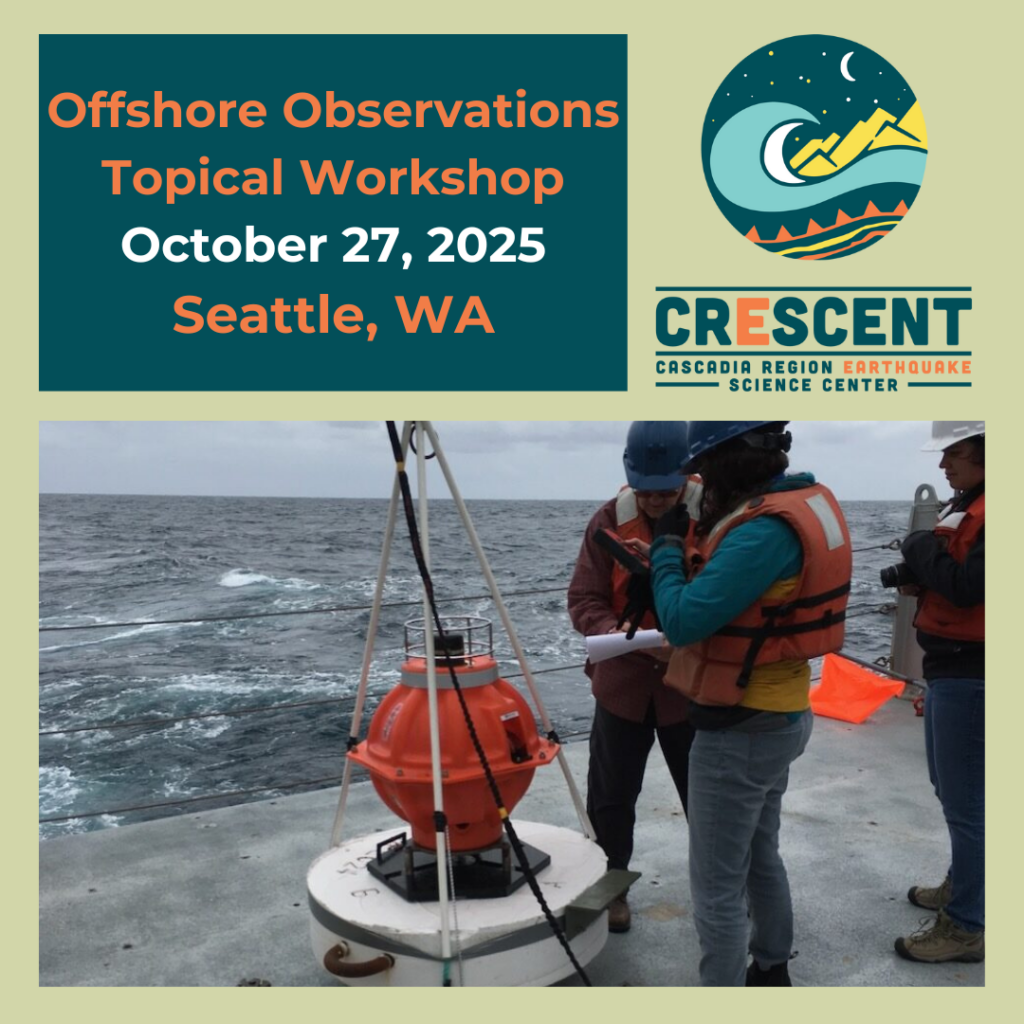
Attendance

This workshop has concluded. For more information, please contact us at cascadiaquakes@uoregon.edu.
Meeting Information Packet

Contents:
Full agenda
Presenter bios
Attendee List
Presentation slides – See links in agenda below for available slide decks
Agenda

Note: All times Pacific Time. Agenda is subject to change.
Monday, October 27
8:30a Check-in and coffee
9:00a Welcome
9:15a Structure of the Incoming Plate
“Vp/Vs Structure of the Juan de Fuca Plate from Converted-Phase Tomography of the Ridge-to-Trench Dataset” presented by Hanchao Jian, Research Associate III, Woods Hole Oceanographic Institution
“An Update on the Pacific Coast Seismic Assessment of Faults and Earthquakes (PACSAFE) Project” presented by Tiegan Hobbs, Research Scientist / Adjunct Professor, Geological Survey of Canada / The University of British Columbia / University of Victoria
“Imaging Along-Dip Variations in Material Properties of the Subducted Crust and Their Link to Megathrust Fault Coupling in Southern Cascadia” presented by Hao Guo, Research Scientist, University of Wisconsin – Madison
“First Steps Towards a Shallow Thermal Structure Model for the Cascadia Subduction Zone” presented by Magali Isabelle Billen, Professor, University of California – Davis
10:15a Constraints on Megathrust Locking State and Shallow Slow Slip
“Deep-sea Borehole Observations Reveal Strain Accumulation due to Megathrust Locking: Cascadia and Beyond” presented by Tianhaozhe Sun, Research Scientist / Adjunct Assistant Professor, Geological Survey of Canada / University of Victoria
“Searching for shallow tectonic tremor offshore Cascadia” presented by Zoe Krauss, Postdoctoral Researcher, Pacific Northwest Seismic Network / University of Washington
“Using Episodic Tremor and Slip to Characterize Segmentation Boundaries in Northern Cascadia” presented by Alaura Custard, University of Kansas
“Shallow slow slip events at the Hikurangi Subduction Zone documented in IODP borehole observatories” presented by McKenzie Carlson, Graduate Student, The University of Texas at Austin
“Plate motion velocities offshore of northern Cascadia from five years of seafloor geodesy with the NCSZO” presented by Jesse Hutchinson, Staff Scientist, Ocean Networks Canada
“Understanding shallow creep in the stress shadow of megathrust locked zone: Cascadia vs. Nankai” presented by Kelin Wang, Research Scientist, Geological Survey of Canada
“Detection of shallow slow slip with a seafloor optical fiber strainmeter” presented by Noel Jackson, Assistant Professor, University of Kansas
11:30a Accretionary Wedge Deformation
“Evidence for megathrust locking and shallow coseismic slip in the Cascadia accretionary wedge” presented by Harold Tobin, Professor, University of Washington
“Improving offshore splay fault geometries and slip histories using seismic data reprocessing and structural modeling” presented by Anna Ledeczi, Ph.D. Candidate, University of Washington
12:00p Lunch
1:15p Fluid Pathways and Hydrology of Subduction Zones
“Subduction zone fluid flow: direct evidence from mineral & water samples” presented by Man-Yin Tsang, University of Saskatchewan
“Seismic full waveform inversion (FWI) can help improve understanding of SZ geology, geophysics, geomechanics and fluid flow” presented by David Lumley, Professor / Department Head, The University of Texas at Dallas
“Active Protothrusts and Fluid Highways: Seismic Noise Reveals Hidden Subduction Dynamics in Cascadia” presented by Maleen Kidiwela, University of Washington
“The Strength of the Sedimentary Wedge Along the Cascadia Subduction Zone” presented by Shuoshuo Han, Assistant Research Professor, University of Texas Institute for Geophysics
“Unraveling Fluid/Methane Seeps at the Cascadia Subduction Zone” presented by Jeffrey Beeson, Assistant Professor, Oregon State University
2:15p Plans for Future Offshore Observations
“The Cascadia Cabled Borehole Observatories Proposal for Scientific Ocean Drilling” presented by Harold Tobin, Professor, University of Washington
“Multiplexed DAS on the OOI RCA” presented by Ethan Williams, Assistant Professor, University of California – Santa Cruz
“ONC’s Offshore Observatories: Status and Roadmap for Infrastructure enabling Subduction Zone Science and Realtime Monitoring” presented by Martin Heesemann, Senior Staff Scientist, Ocean Networks Canada
“Strengthening Tsunami Early Warning in Indonesia through Offshore Observations and EEWS Integration” presented by Buha Mujur Mandela Simamora, Master of Science, Indonesia Agency for Meteorology Climatology and Geophysics
“The Cascadia Offshore Subduction Zone Observatory” presented by William Wilcock, Jerome M. Paros Endowed Chair in Sensor Networks, University of Washington
“Offshore Science Goals and Observational Strategies for Cascadia” presented by David Schmidt, Professor, University of Washington
“Crossing the Coastline in Cascadia and Beyond: Persistent Barriers and Promising Directions” presented by Helen Janiszewski, Assistant Professor, University of Hawaiʻi at Mānoa
3:30p Breakout discussions
4:30p Closing remarks
5:00p Workshop concludes
Workshop Planning Committee

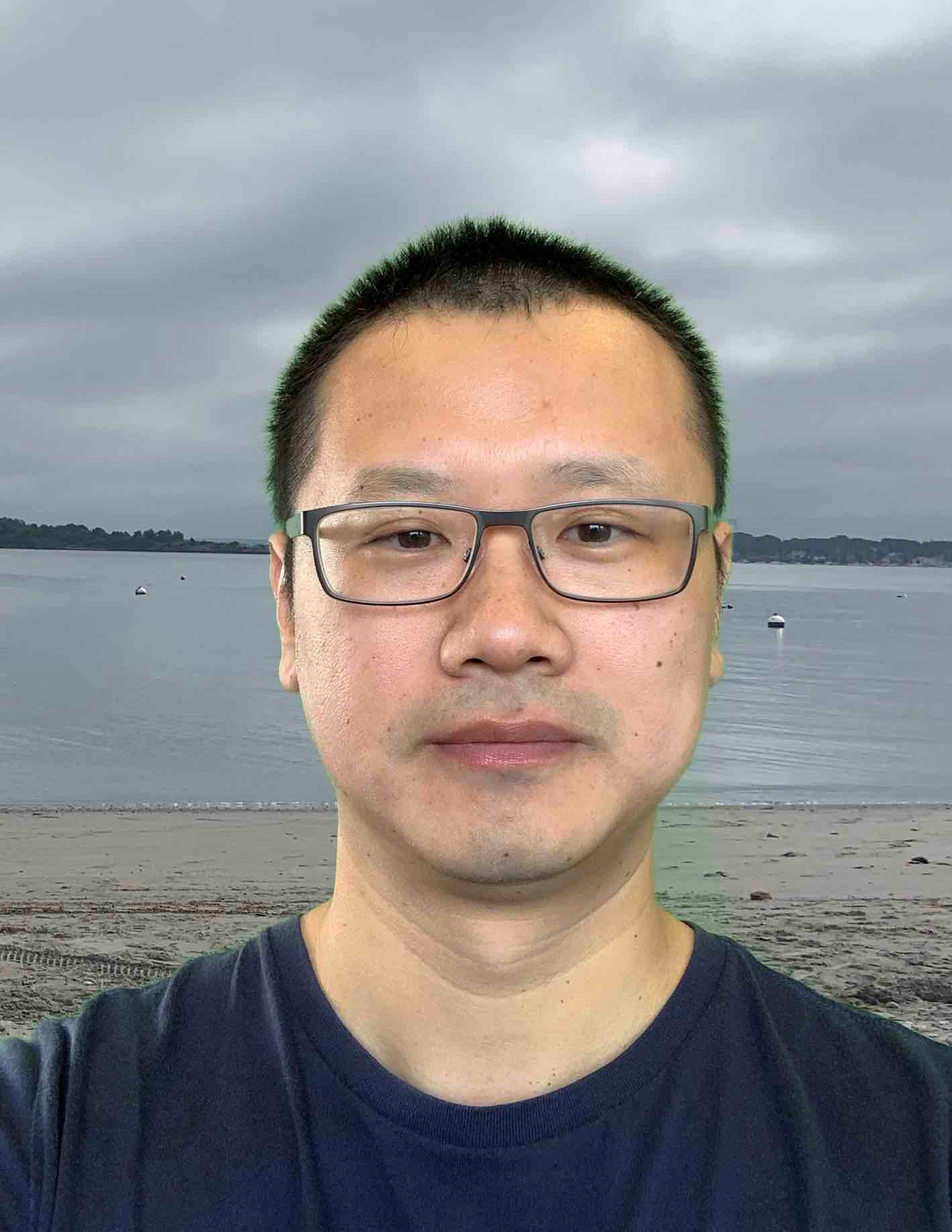
Matt Wei
University of Rhode Island
matt-wei@uri.edu
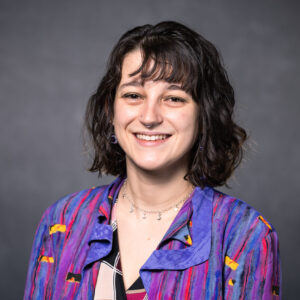
Anna Ledeczi
University of Washington
ledeczi@uw.edu
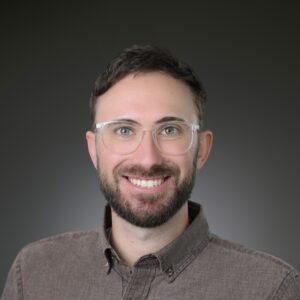
Brandon Shuck
Louisiana State University
bshuck@lsu.edu
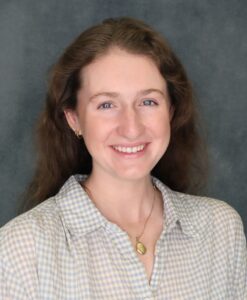
Zoe Krauss
University of Washington
zkrauss@uw.edu
